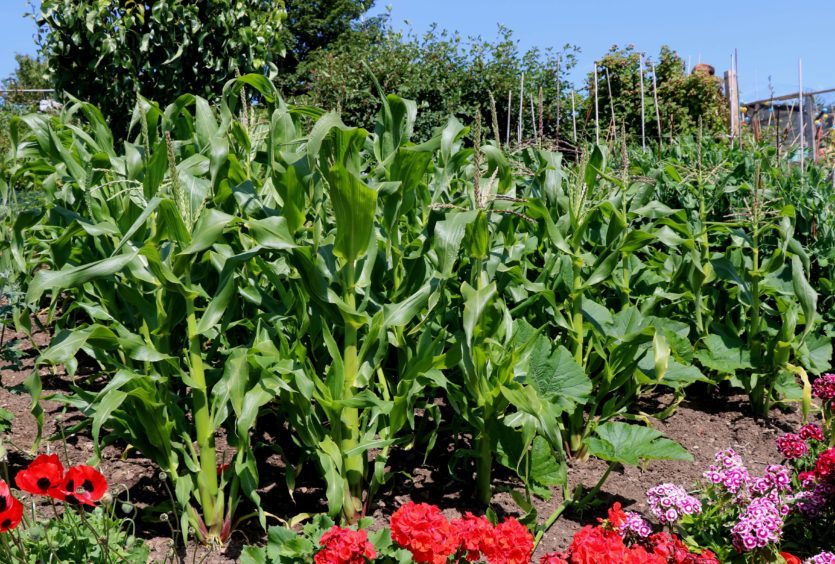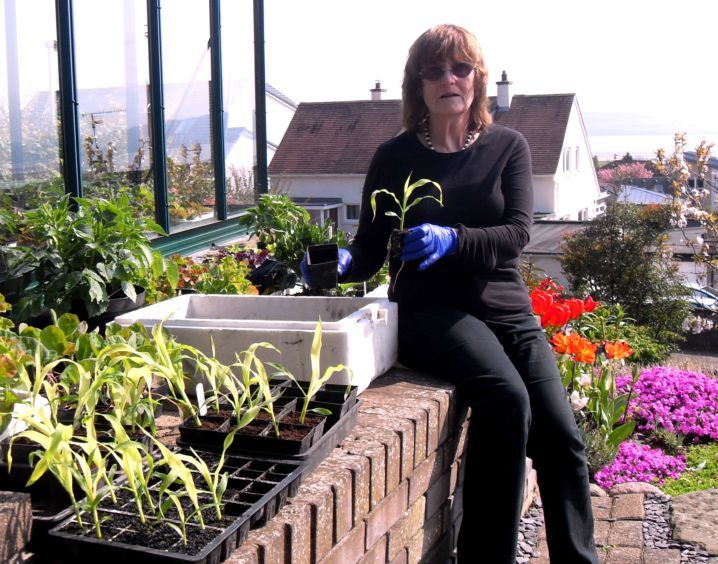Forget New Year resolutions – August is a great time to turn over a new culinary leaf, says John Stoa
August is a great month for healthy eating as the garden and allotment are at the peak of the harvesting season with a huge variety of fresh fruit and vegetables.
Sweet corn tends to ripen all at the same time so harvesting the cobs is a once over task. However, to know when best to cut the corn, sampling is done every few days to test the softness and sweetness.
Sample when some of the cobs tassels have turned a dark brown colour.
Push your fingernail into the corn and if it is watery it is not ready, as it should be milky when tested, but if it is left too long it will go pasty.
I tend to pick a few cobs to sample for the table about two weeks before final harvest.
The corn has a high sugar content at this stage, but the sugar is slowly converted to starch if harvesting is delayed.
However, for folk watching the calories, one cob has less sugar than an apple and only half as much as a banana.
Some newer varieties have a higher sugar content known as super sweet and are delicious to eat fresh straight off the plant.
The sweetness in the corn is created by a recessive gene so keep the sweet corn block well away from other sweet corn plants otherwise cross pollination may cause loss of sweetness and make the cobs chewy.
Sweet corn has amazing health benefits both as a freshly eaten cob straight from the plant and also when cooked as many of the benefits are enhanced.
They are rich in phytochemicals that promote healthy vision, rich in vitamins B and C, plus the minerals iron, magnesium and potassium.
They are also rich in fibre which feeds the good bacteria in your gut, and aid digestion.
Culture
Sweet corn is still seen as a novel crop in Scotland though it has been grown here by amateurs and farmers for many years.
Our soils and climate (most years) are perfect for its growth and cropping, and this year my plants (variety Incredible) are huge with some showing a third cob on very vigorous plants. To get a strong and vigorous plantation grow on well manured and fertile soil.
As planting is most often done in June, there is plenty of time to dig over the plot in winter adding plenty of compost and leaving the surface rough for winter weathering.
In early spring break down the soil, rake level adding some fertiliser then sow down a fast growing green manure crop.
This will add humus and assist drainage.
Trample this down before it flowers probably in early to mid-May then dig in the green manure.
This will give it time to begin to rot down before planting then it will release its nutrients while the sweet corn grows.
Sow seed indoors individually in cellular seed trays in mid-March, then pot up into bigger pots when the plants are about six inches tall.
Harden off in May then plant out in early June, but all depending on prevailing weather.
Plant about two feet apart in square blocks to assist wind pollination.
Give them wider spacing if you grow then together with pumpkins in the same block.
Keep weeded and water in dry weather.
Varieties
Incredible sugar enhanced variety, very reliable. Grows quite tall.
Lark F1 tendersweet variety
Sundance F1, Early
Swift’ F1 Extra tender sweet. Plants have two to three cobs
‘Golden Giant’ AGM Supersweet, Large, good quality cobs.
‘Earlibird AGM Supersweet early variety with vigorous plants with good sized, uniform cobs.
‘Lark’ AGM Extra tender sweet. High yielding top quality cobs.
Wee jobs to do this week
Rhubarb is growing very strongly now that the rain has returned and the plants have had really warm weather, so keep pulling off good stems for immediate use or if the crop is heavy it can go into the freezer for future use.
Give the plants a feed to boost more growth as there is still time to pull more stems off before the plant slows down in autumn.
Brilliant for crumbles, stewed rhubarb and added to saskatoons for a fantastic jam.














